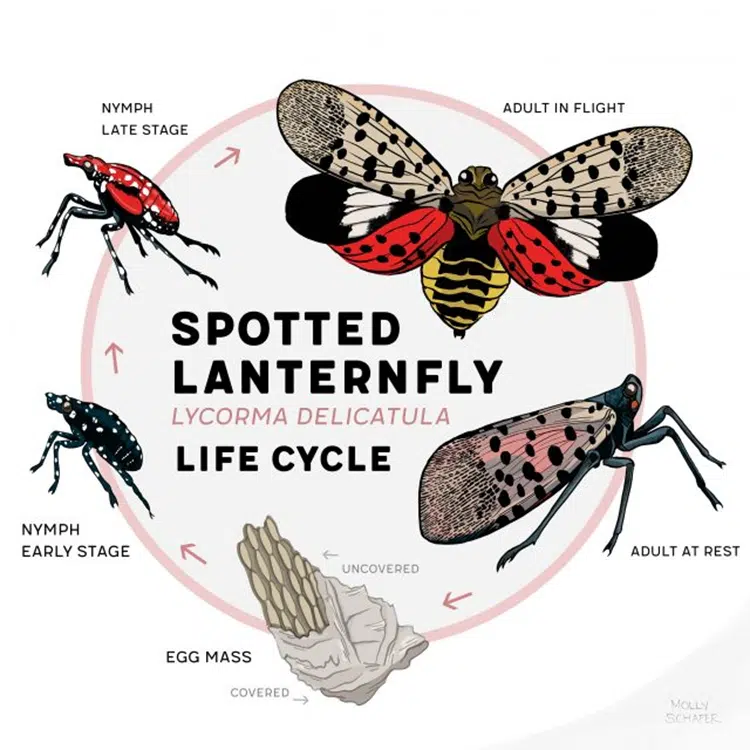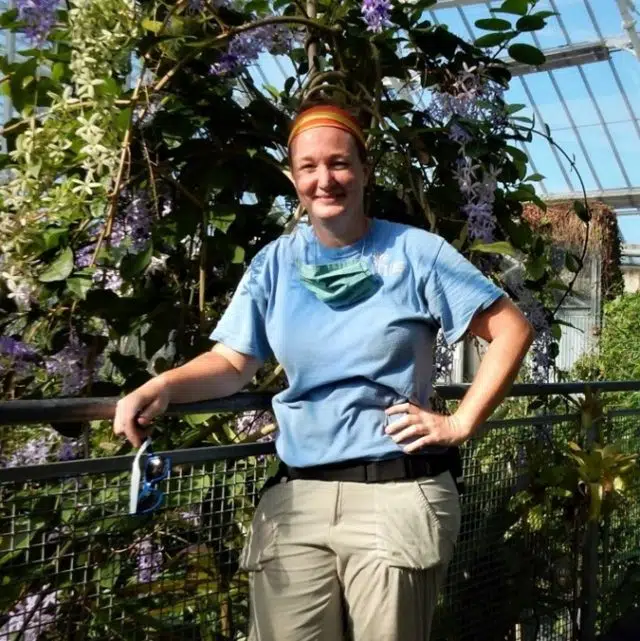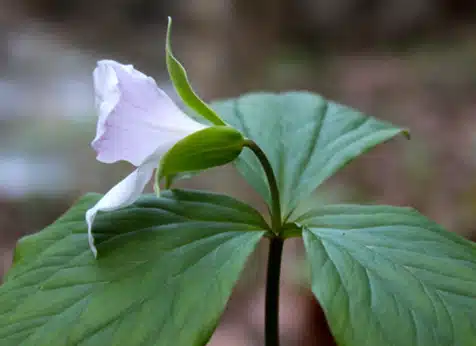

The spotted lanternfly, Lycorma delicatula, is an invasive leafhopper making its way into our region. Originally from China, India, and Vietnam, it is thought to have made its way stateside in a shipment of stone. It was first detected in Berks County, Pennsylvania in 2014. Recently, its presence has been confirmed in Ohio in Cuyahoga, Lorain, and Jefferson Counties. It is important that we all keep an eye out in an effort to stop the insect from spreading and becoming established in more places.
Why is this something we should be concerned about? What could be so bad about a tiny, pretty, little bug like the Spotted Lanternfly? Well, it is an agricultural pest that can feed on over 70 plant species, including grapes, hops, apples, peaches, and other fruit trees, all of which we have here at the botanical garden! Below are pictures of just some of the plants that could be at risk.



Though spotted lanternfly can affect many species of plants, its preferred host tree is Ailanthus altissima, or tree-of-heaven, which is another invasive in our area. To help control spotted lanternfly, it is a good idea to remove tree-of-heaven from your property. This may require chemical treatment as tree-of-heaven will resprout vigorously after being cut down. Be sure not to confuse our native sumacs with tree-of-heaven. They have different leaflet shapes, but the best way to tell the difference is the fruit.

Spotted Lanternfly feeding can cause oozing sap, wilting, leaf curling and dieback. The honeydew they secrete also encourages sooty black mold growth. So, now that we know it is important to be on the lookout for this critter, what does it look like?
Spotted lanternfly has several stages in its lifecycle, and it looks different at each stage. First is the egg stage. Each female can lay 1 or 2 egg masses, each with 30-50 eggs each! The eggs are usually covered with a waxy substance that looks like a smudge of clay, or cracking mud. Next is the early nymph stage, which can be found May through July, at this time the bug appears black with white spots. The late nymphs, found July through September, are red with white spots and black stripes. Finally, the adults are approximately 1” long and ½” wide when at rest, the forewing is grey with black spots, and the wing tips are grey. The hindwings have contrasting patches of red and black with a white band. Adults can be found July to December.
Please, help us keep this invasive bug in check! Below are some great resources and ways to report sightings. If you see it, squish and report it!

Picture from: https://mtcubacenter.org/the-life-cycle-of-the-spotted-lanternfly/
Penn State Extension put out a great video explaining the problem and the lifecycle of spotted lanternfly, check it out here: What is a Spotted Lanternfly?
Report any sightings of spotted lanternfly here: https://agri.ohio.gov/divisions/plant-health/invasive-pests/slf#:~:text=Spotted%20lanternfly%20has%20not%20yet%20been%20confirmed%20in,other%20pests%20can%20cause%20these%20symptoms%20as%20well.

Bernadette Gallagher
Gardener
Before landing with us Bernadette has been an arborist with Forest City Tree, a USDA tree-climber for the Asian longhorn beetle project, a VISTA community garden project manager, and a Nature Conservancy preserve steward. She is an ISA certified arborist and carries a wildlife biology degree from OU. Bernadette’s favorite CBG assignment so-far? Climbing the dawn redwood in the Japanese Garden—with her saw in tow!













